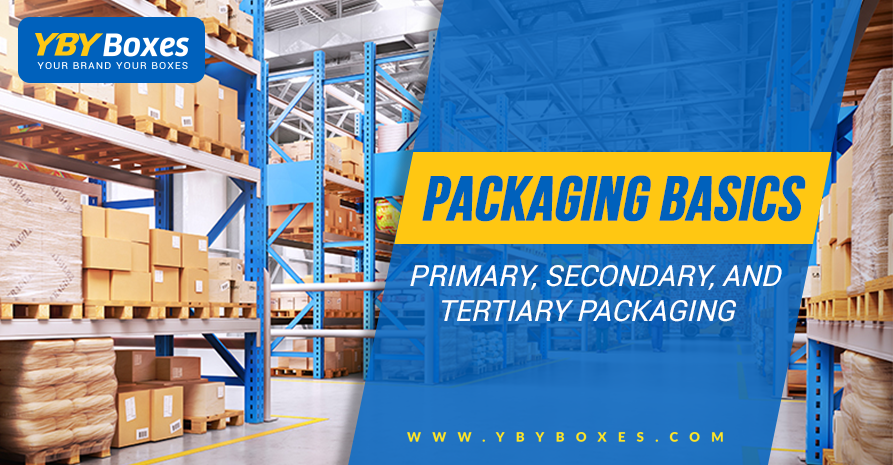-
Call Now:
888-800-8032

While looking for packaging ideas and tips, everyone might have come across the words primary, secondary, and tertiary packaging. These are the different levels of packaging that are involved in bringing a product to customers unharmed and unchanged. Each level of packaging is purposed for a unique task. Some are meant to stay with the product till it runs out, some only accompany the products to the post-purchase phase, and some are not even seen by customers since only intended to reach warehouses.
Our guide to different packaging levels and their functions is here to help you know the difference between each packaging level and which one your brand needs to focus on:
Sometimes referred to as retail packaging, primary packaging is the one that is in contact with the product. For instance, the jar of your jam product is considered its primary packaging since it is in direct contact with the product. Some companies use corrugated materials to deliver the extra fancy touch to their primary packaging which includes tech sellers etc.
Purpose
Primary packaging is targeted for containing, preserving/protecting the products and informing the customers about the product. This information about the product can be anything, from its composition to its nutritional values and storage guidelines.
Businesses bring customer attention to their products through branding and build brand recognition through the use of colors, graphics, and logos. However, sometimes it can make the primary packaging appear too crowded, this is where the secondary packaging enters. It is an outer packaging that does not come in contact with the product.
Purpose
Other than branding and advertising, there are other reasons as well to using secondary packaging. For example, they protect fragile unit items during transit, they are used to stack and pack together single unit products, and they are also named grouped and/or display packaging.
It is a packaging choice most popular in the cosmetic, food, and beverage industries. This type of stack packaging allows quicker transport, arrangement, and unloading of items. The combination of primary and secondary packaging is mostly used in luxury packaging or improving the shelf appearance of a product.
Here is a product packaging that is least likely to be seen by the customers. Just as secondary packaging groups individual units together, tertiary packaging does a similar task on a much larger scale. It is a packaging that survives from warehouse to stores and likely gotten rid of when products are taken out for arrangement on shelves.
Purpose
Tertiary packaging is purposed for creating easy transportation, handling, and protection of a mass number of products at the same time. It helps in the quick unloading and undamaged delivery of items.
Different packaging levels have their own importance and parts to play in the safe delivery of products to customers. Although it does not mean packaging is good only for product security. Good packaging has, time and again, proven its impacts on sales and how it can attract customers in just a matter of moments.